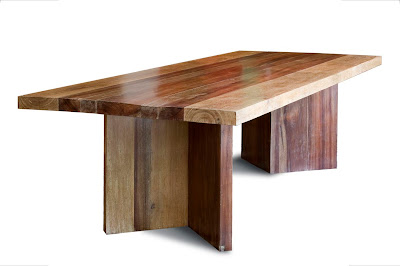Building Green - Getting Started Part III
Here is the green picture for the day; it is a picturesque sunset illuminating some drifting clouds. Sunsets like this are commonplace out around country farmland. What is the most perfect sunset you have ever seen?
 |
| Picturesque Sunset |
Try This!
Sometimes, we might find solutions to problems in the most obvious places, right outside our windows in fact. Energy efficiency is a major part of green building, and some great opportunities to increase the energy efficiency of a building, are in the categories of heating, cooling and lighting. Try this: use the Sun and windows to your advantage. Open the blinds, curtains and drapes during the day and let that natural light shine in. Natural light is very healthy for us and can reduce lighting costs by up to 60%. Also, this sunlight will provide passive solar gain heating, which means when sunlight strikes the surfaces of the inside of your building, this sunlight heat energy will be absorbed, and then radiated back into the air in the building's interior. This will heat up your house and can reduce heating costs by up to 50%.
 |
| Let Natural Light Shine Through Windows |
Also, try slightly opening your windows in the evening at dusk and then leaving them this way throughout the night. Excess heat that has built up throughout the day will escape and leave your house cool for the next morning.
Sometimes, solutions are simple, we just have to look in the right places for them. At the end of this post, there will be links to some helpful resources.
Structural Steel
Using lumber for the main structure of a building is the traditional method of construction for residential buildings. Lumber is inexpensive, and is easily worked with, shaped and installed. Lumber has been the choice structural material for decades. However, lumber is also subject to cracking, splitting, warping, twisting and rotting.
 |
| Rotting Structural Lumber |
From an environmental perspective, structural lumber is manufactured as dimensional lumber, which means that structural lumber is solid wood, and is cut from a tree log that is the same length as the lumber, or longer. This fact means that old-growth trees are the desired source for this lumber. Most mature, old-growth trees are not a sustainable resource, and their depletion means old-growth forests are declining as well.
Old growth forests provide habitats for very specialized species that cannot live anywhere else. These forests provide: fallen logs, old tree stumps, shaded forest floors, hollow tree cavities and high treetop canopies, among other micro-habitats. Iconic wildlife like hawks, owls, woodpeckers, deer and chipmunks need these habitats to survive.
Steel and aluminum structure members are great green alternatives to dimensional lumber. These metal alternatives do not crack, split, warp, twist or rot, and are lighter than dimensional lumber. Steel members can be made from up to 50% recycled content, and can be recycled. Aluminum members can be made from up to 100% recycled content and can be 100% recycled.
 |
| Metal Structural Members For Interior Structure |
Metal members are great for interior structure, however, do not use metal members for exterior structure. Metal members are very conductive of heat, and can reduce the heating and cooling energy efficiency of your building, by allowing easy escape, or infiltration of heat.
When you use metal structural members for the interior structure of your building, you can greatly reduce the amount of structural lumber that goes into your building, and contribute to the overall "green-ness" of your building!
Links To Helpful Resources
For all Canadian and U.S. residents, here is a website about Bailey Metal Products Limited. This company is a supplier of metal framing members.
http://www.bmp-group.com/
For Western Canada and U.S. residents, here is a website about SCAFCO Steel Stud Company. This company is a supplier of metal framing members.
http://www.scafco.com/
For all Canadian and U.S. residents, here is a website about Imperial. This company is a supplier of metal framing members.
Thank you for reading, I hope you learned something new. Stay posted for more sustainable building information and helpful resources on the Belac Construction Green and Sustainable Building Blog!
 |
| What a great post! Encore! Encore! |
















